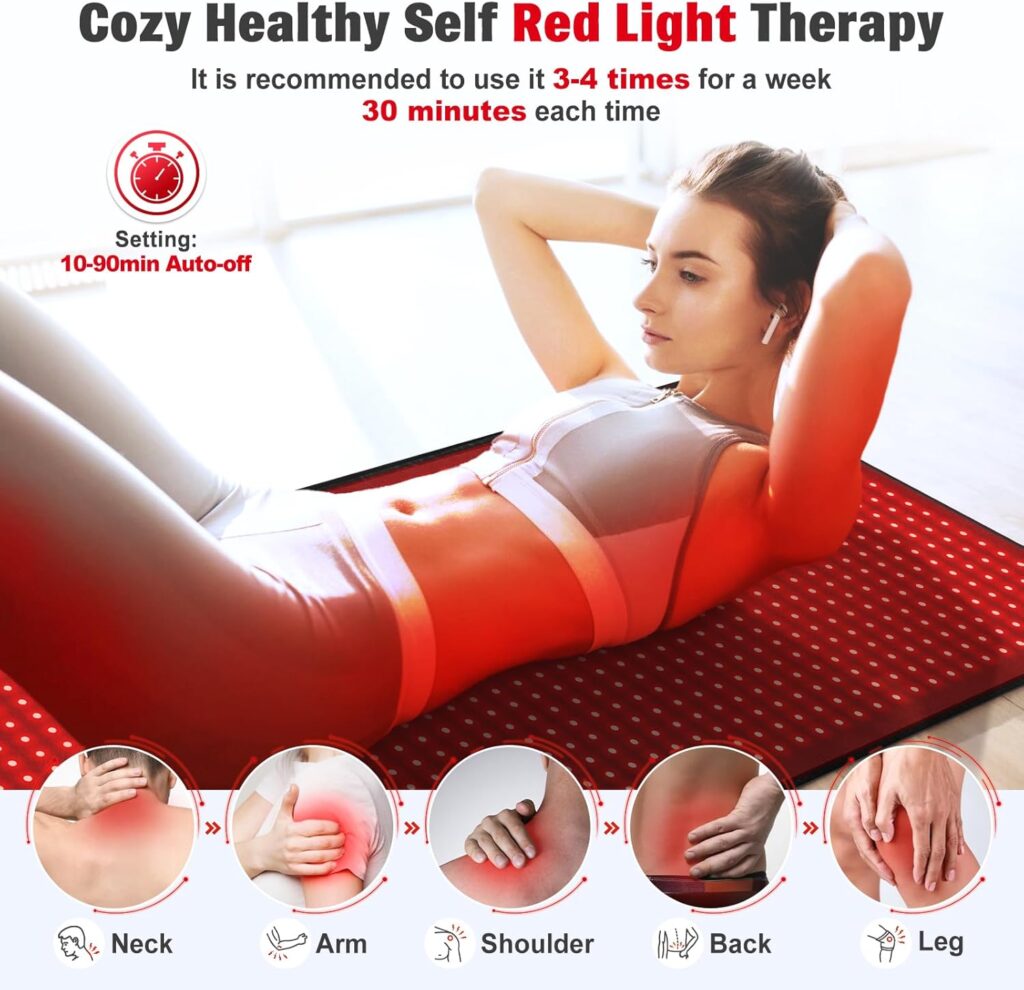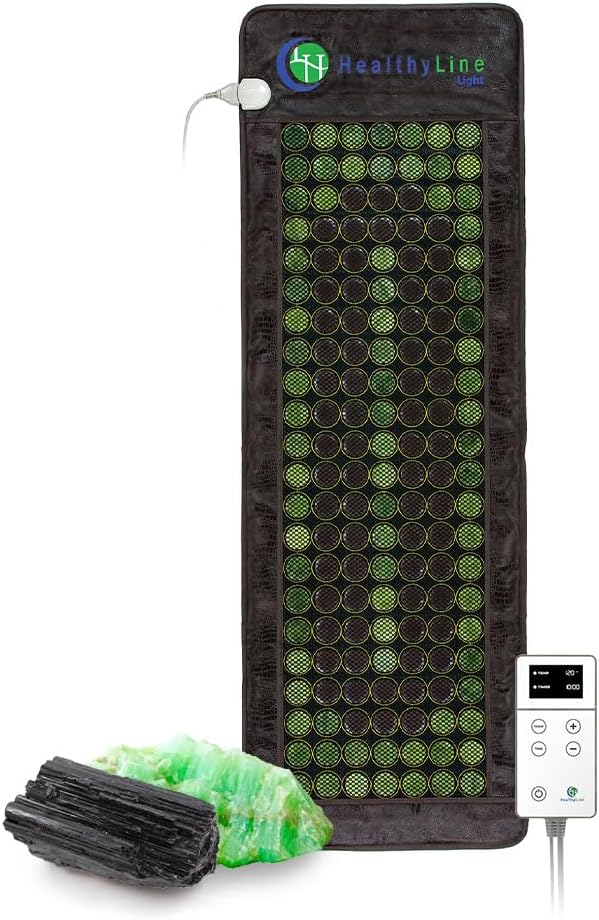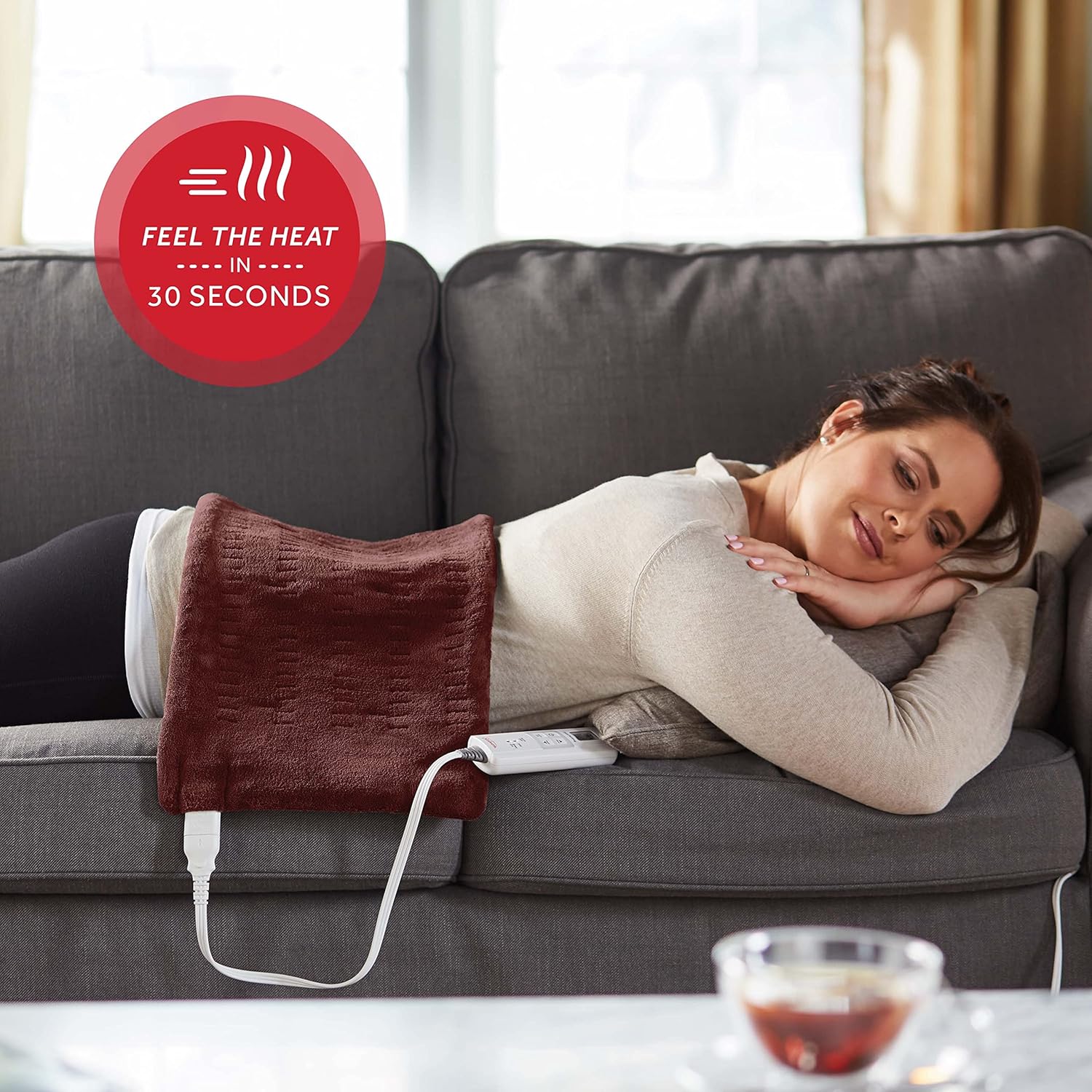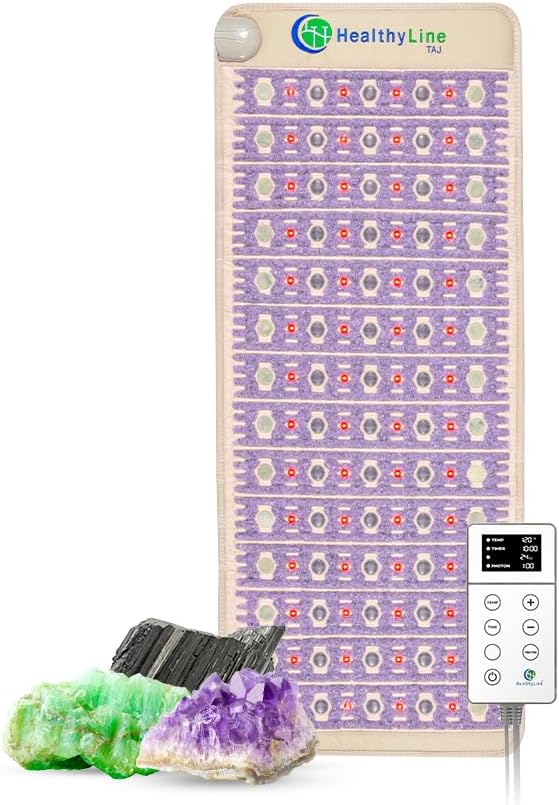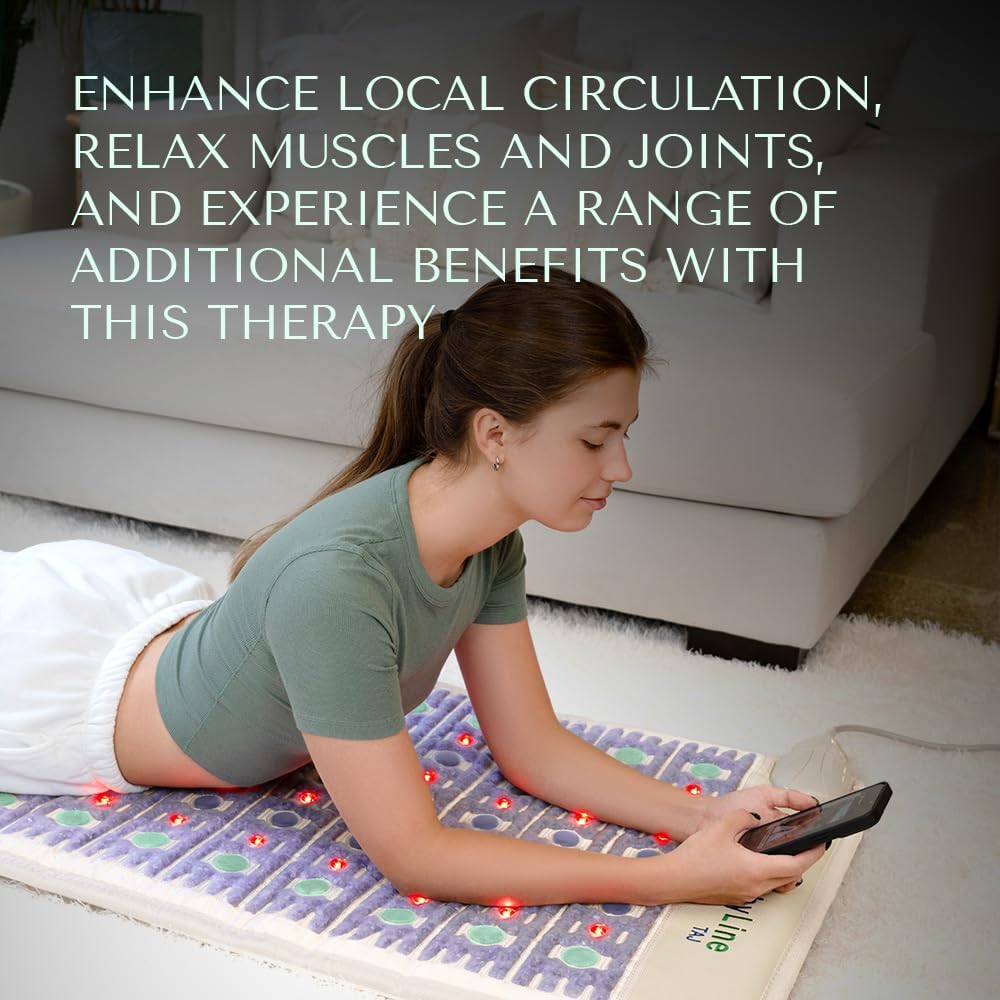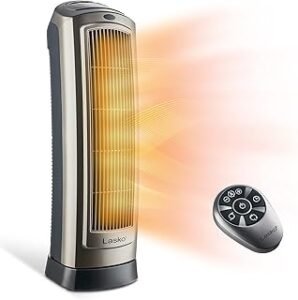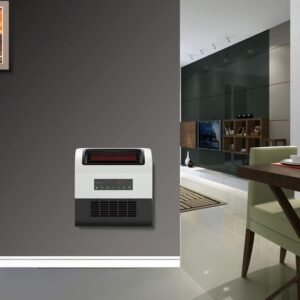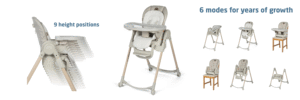Why Infrared Mats Matter for Home Wellness
In recent years, wellness devices that were once confined to spas and clinics have made their way into homes. Among them, infrared mats stand out as a quiet revolution: portable, non-invasive, and promising a wide range of health and comfort benefits.Table could not be displayed.
An infrared mat (also called an infrared therapy mat, far-infrared mat, PEMF mat, amethyst mat, etc.) uses far infrared rays, crystals (like jade, amethyst, tourmaline), and sometimes PEMF (pulsed electromagnetic field) technology to deliver gentle heat deep into the body.
Best Infrared Mats
Table could not be displayed.
This is different from a regular heating pad, which simply warms superficially. The goal is to stimulate circulation, relieve muscle stiffness, reduce pain, assist detoxification, promote relaxation, and support overall wellness.
Many wellness writers and users call the infrared mat a “sauna in a blanket” — you don’t need to heat a whole room or build a sauna. You simply lie down, let the mat warm up your body, and enjoy the therapeutic effect.
That said, not all infrared mats are created equal. Differences in design, heating elements, crystal choice, safety standards, EMF control, and comfort can profoundly affect results. So, in this article, I’ll walk you through:
-
Key features to look for
-
Real Amazon-available infrared mat options
-
Pros, cons, and comparative analysis
-
Use cases showing how effective they are in every house
-
Safety notes, tips, and FAQs
By the end, you’ll understand not just which mats are good, but which ones might truly work well for you.
What to Look for in an Infrared Mat
Before diving into specific models, let’s set a checklist you can use to judge any infrared mat you see (especially on Amazon).
1. Heating Technology & Uniformity
-
Carbon fiber, ceramic heating, or nano-carbon sheets – These materials provide more uniform and gentle heat compared to old wire-based mats.
-
Even heating surface – Avoid products that have hot spots or cold zones.
-
Quick warm-up time – The faster it warms, the more convenient for daily use.
2. Crystal Components & Negative Ions
Many mats embed crystals—amethyst, jade, tourmaline, or tourmaline+other gems. The idea is that crystals, when heated, emit negative ions and amplify the infrared/PEMF effect.
Theoretical benefits include antioxidant effect, better cell signaling, and deeper penetration of the infrared waves.
3. PEMF / Pulsed Electromagnetic Field
Some advanced mats combine PEMF with infrared. The PEMF creates pulsed low-frequency magnetic fields, which proponents claim aid cellular regeneration, energy, and recovery.
If a mat includes PEMF, check for adjustable frequency, intensity, and good shielding.
4. EMF / Safety Controls
One major concern with electronic wellness devices is electromagnetic field exposure (EMF). High-quality mats minimize stray EMF by shielding circuits or using special designs.
Look for “low EMF,” “EMF mitigation,” or “certified EMF safe” in descriptions.
5. Size, Flexibility & Portability
-
Full-body mats (e.g. 70” × 30”) allow you to lie fully stretched.
-
Rollable or foldable designs help with storage.
-
Portability is important if you want to take it to a studio, travel, or shift rooms.
6. Control Panel & Timer / Auto-Off
-
Good control panels allow precise temperature, timer settings, memory (save your favorite settings).
-
An auto shut-off (e.g. after 60, 90, or 120 minutes) is essential for safety and energy saving.
7. Material & Comfort
-
Fabric covering should be durable, breathable, and comfortable.
-
Ease of cleaning or removable covers is a plus.
-
Design should avoid creating pressure points or uneven surfaces when lying on it.
8. Warranty, Certifications & Reviews
-
Look for reliable warranty (1–5 years).
-
Certifications like CE, RoHS, FDA listing can add trust.
-
Honest user reviews with photos/videos help you see real performance.
With this checklist in mind, let’s look at some real options on Amazon and see how they measure up.
Infrared Mat Products to Know (Amazon-Based)
Below are some infrared mat / heating pad / therapy mat models currently listed on Amazon. I use them as examples to illustrate advantages, drawbacks, and real-world performance.
Note: These are illustrative — availability, price, or specs might change. Always check the latest product page before purchase.
1. Red Light Therapy Mat for Body
This is a full-body mat with amethyst crystals integrated into the design.
Highlights & Strengths
-
The combination of amethyst crystals with infrared heat aims to deepen therapeutic effect.
-
Large enough to use full body (head to toes).
-
Often praised by users for gentle yet penetrating warmth.
Things to Check / Potential Drawbacks
-
Price tends to be premium because of the crystal integration.
-
Weight and thickness—crystals can make it heavier and less flexible.
-
Ensure EMF safety—some models may not prioritize EMF shielding.
Use in the Home
Place it on your bed or massage table. Use it for 20–30 minutes after work to relieve muscle tension, or before sleep to drift into deeper rest.
2. HealthyLine Far Infrared Heating Pad
This is a widely sold, full-length mat that covers a large portion of the body.
Key Features
-
Far infrared heating that penetrates deeper than conventional heating.
-
Uses carbon nano heating sheets — more even, flat heating vs stiff wires.
-
Digital controller with temperature and timer adjustments, memory settings, and auto shut-off.
-
Comes with a long cord, so you can place it on bed, sofa, or massage chairs.
User Feedback & Considerations
-
Many users praise its pain-relieving effect on back, legs, and neck.
-
Some note that while performance is good, durability may vary—e.g. complaints after extended use.
-
Because it’s large, it may run warmer than smaller mats; always start at lower temperature.
In-Home Use Cases
Great for full-body sessions. Use it on top of a sheet, lie down for 30–45 minutes, set it to “low” or “medium.” Use during reading, evening relaxation, or post-workout recovery.
3. Sunbeam XL Back Neck & Shoulder Heat Therapy Pad — 12″ × 24″
Sunbeam XL Back Neck & Shoulder Heat Therapy Pad — 12″ × 24″
Key Features:
-
Size: 12 inches by 24 inches (a larger “XL” size suitable for covering substantial area of back, shoulders, neck)
-
Microplush fabric: soft, comfortable surface for skin contact
-
Machine-washable cover: detach the heating element / control to wash safely
-
Auto shut-off: for safety, the unit will turn off after a set period
-
Multiple heat settings: six adjustable heat levels to tailor warmth to your comfort
-
Versatile design: meant for back, neck, shoulders, but can also be used on other body areas as desired
-
Power / heating technology: electric plug-in device (standard AC powered)
-
Intended for therapeutic warmth: to relieve muscular tension, soothe aches, relax stiffness
Benefits & Use Cases
Here are some of the ways this kind of heat pad is effective and useful in everyday life:
-
Relieves Muscle Tension & Stiffness
Applying consistent, gentle heat to the neck, shoulders, or back can help loosen tight muscles and reduce stiffness. For people who sit at desks, do heavy labor, or have poor posture, a pad like this can bring relief. -
Enhanced Comfort During Rest / Sleep
You can lie down or recline while using it (within safety limits). The large size helps cover more area so you don’t have to reposition frequently. -
Applicable in Cold Weather
On chilly days or in cold rooms, using this pad can warm up your back and keep you comfortable without overusing central heating. -
Therapeutic Use Post-Workout / Injury Recovery (Cautiously)
After exercising or for mild muscle strain (non-acute), heat therapy can promote blood flow. But you should avoid using heat on fresh injuries or inflamed areas. -
Easy to Maintain
Because the cover is machine-washable (after detaching the wiring/control), hygiene is easier—important if you use it frequently.
4. HealthyLine / HL / Gemstone-Incorporated Mats
Many Amazon listings appear under brands like HealthyLine, often advertised as gemstone heating mats (jade, tourmaline, amethyst). I did not pick a single SKU to cite, but these show up in many lists.
Typical Features
-
Multiple types of stones (jade, tourmaline, amethyst) embedded across the mat.
-
Adjustable temperature and timer controls, sometimes folded or rollable design.
-
Usually aimed at partial or full-body use depending on size.
Pros
-
Crystals may amplify effects (in theory).
-
Can be more visually appealing and marketed as luxury wellness gear.
-
Many models have foldable or modular designs for easier storage.
Cons
-
Crystals increase weight and cost.
-
Some mats push to higher temperatures — risk of overheating.
-
Sometimes the heating performance is uneven if crystals obstruct pathways.
Home Use Tip
Use in stages: start with 10–15 minutes, allow the mat to preheat, and gradually increase. Consider wearing a light cotton sheet between the mat and skin.
How Effective Are Infrared Mats in Everyday Homes?
You might ask: Are these just wellness gimmicks, or do they deliver practical benefits? The answer is: Yes, in many cases they do—especially when used properly and for the right purposes. Let’s explore how infrared mats can be effective in every house, with real-world use examples.
1. Muscle and Joint Pain Relief
One of the most common uses is to relieve soreness, stiffness, and tension. The deep-penetrating far infrared heat can increase microcirculation, help loosen tight muscles, and reduce the perception of pain. Users often report relief from lower back pain, arthritic joints, or post-workout soreness. Town & Country+2infraredsauna.com+2
Example Use Case:
After a long day of standing or desk work, lie down on the mat for 20 minutes. Set it on medium. Many users say that by 10–15 minutes, tension in their back or shoulders begins to ease.
2. Relaxation, Stress Reduction & Sleep Support
Infrared warmth gently envelops the body, promoting relaxation. Many users combine the mat with meditation, breathing exercises, or quiet reading to unwind. Some even use it before bed to ease into restful sleep. Town & Country+1
Example Use Case:
In the evening, place the mat on your bed, set it to a lower temperature (so it’s cozy but not hot), and lie for 20–30 minutes before turning off the lights. A few users say they fall asleep faster or feel calmer.
3. Recovery After Exercise
After workouts, your muscles benefit from heat-induced circulation. The mat can serve as a warm-down tool to speed recovery. The PEMF component (if present) may further support cellular regeneration in muscles. The Chalkboard+1
Example Use Case:
Do your normal workout. After finishing, lie on the infrared mat for 15–20 minutes. Hands-free, let your body soak up gentle heat while catching your breath or doing light stretching.
4. Detox, Circulation & Sweating
Some wellness sources claim that infrared mats can support detox by promoting sweating at lower ambient temperatures. Increased circulation helps flush waste products.
Important Caveat:
While infrared devices may simulate some effects of a sauna (like gentle sweating), scientific proof is limited. Studies of infrared saunas show some benefits, but for safety and claims, consult health professionals.
5. Home Spa & Self-Care Rituals
Because mats are compact and easy to use, many people integrate them into their daily self-care: reading, listening to music, light therapy, or even journaling while lying on the mat.
Example Use Case:
On weekends, make a “spa corner” in your home. Place a comfortable mat or pad, turn on soft music, and lie on the infrared mat for 30–40 minutes while reading or meditating.
Comparative Analysis & Recommendations
Having seen features and use-cases, here’s how to choose and which ones might fit best in different home scenarios.
| Home Use Scenario | Recommended Mat Type / Features | Why It Works |
|---|---|---|
| Full-body therapy (from neck to toes) | Large full-length mat (70″+), preferably with carbon nano or uniform heating | Covers your entire spine, legs, and more |
| Portable / shared use | Rollable or foldable design, medium size | You can move it between rooms or share it |
| Dual-purpose (infrared + PEMF) | Hybrid mats with adjustable PEMF | Adds magnetic therapy to heat therapy |
| Budget-conscious starter | Smaller pads (back, lumbar) with reliable heating | Affordable entry point to test the technology |
| Luxury / gemstone enthusiasts | Amethyst or jade integrated mats | Aesthetic appeal, crystal marketing value |
My Recommendation (Balanced Choice)
If I were choosing one mat for everyday home use, I would lean toward a carbon nano full-body mat with even heating and good control, and minimal EMF output. The UTK-style mats are solid mid-range options because they offer decent features (size, control, safety) at fair price.
If your budget allows, a hybrid infrared + PEMF mat with shielding is ideal for users who want maximum features. But only if it’s from a trusted brand with good reviews and warranty.
Real-World Stories & Reviewer Notes
-
A user on Town & Country’s best infrared mats said: “I love my Infrared PEMF Go Mat! It’s super convenient to use while working or watching TV.”
-
A wellness editor tried three at-home mats including a gem-based mat and noted differences in comfort, heat response, and ease of use.
-
GoodGear’s review of Bon Charge’s PEMF mat described how it helped calm “inner chaos” and supported daily recovery routines. Good Gear
-
Harper’s Bazaar highlighted a UTK infrared mat with jade/tourmaline crystals, noting that many users saw relief in aches when used regularly for 10–20 minutes.
These real-world voices echo the idea that consistency is often more powerful than the “best brand.” A less fancy mat used daily may outperform an expensive one used sporadically.
How to Use Infrared Mats Safely & Effectively (Tips & Best Practices)
To maximize benefits and avoid risks, follow these guidelines:
-
Start Slowly
-
Begin with 5–10 minutes at low temperature.
-
Gradually increase time and temperature over days or weeks.
-
-
Stay Hydrated
-
Infrared heat can cause mild sweating; ensure you drink water before and after sessions.
-
-
Use Light Clothing or a Thin Barrier
-
Use cotton or breathable fabric between your skin and the mat, especially early on.
-
-
Monitor Warm-Up Behavior
-
Don’t turn up to max immediately. Let the mat warm gradually and step off if you feel overheating or discomfort.
-
-
Limit Session Time
-
Many manufacturers recommend 30–60 minutes max per session. Use auto shut-off.
-
Avoid continuous use overnight on high settings unless the mat is specifically rated for it.
-
-
Check For EMF Certification / Testing
-
Use EMF meters or check manufacturer specs. Healthy mats should emit very low stray fields.
-
-
Alternate Use Days
-
Don’t overuse. Even wellness tools need breaks. Use on alternate days if you feel fatigue.
-
-
Consult Your Physician
-
Especially if you have conditions like pacemakers, implants, pregnancy, severe cardiac issues, or intensive chronic illness.
-
-
Maintain & Clean Carefully
-
Remove controls / power plugs before cleaning.
-
Use soft cloth and mild cleaner; avoid soaking or washing the heating elements.
-
-
Track Your Experience
-
Keep a journal: note session duration, temperature, how you felt before/after (pain, mood, sleep). Over time you’ll find the settings that work best.
-
Limitations, Cautions & Scientific Reality
To cover all angles, it’s important to be realistic:
-
Not a cure-all: Infrared therapy mats are complementary tools, not medical treatments.
-
Scientific evidence is still emerging: While there is some beneficial data around infrared saunas and therapies, many claims about detox, disease reversal, or deep “healing” lack strong large-scale clinical support. Mayo Clinic+1
-
Risk of burns or overheating: Especially with faulty mats or improper use.
-
Quality variance: Some cheap mats may degrade quickly, have uneven heating or poor shielding.
-
Contraindications: People with metal implants, pacemakers, skin conditions, or sensitivity to heat should consult physicians.
-
EMF exposure: Poorly designed mats can emit higher electromagnetic fields, which is a concern for long-term usage.
By being informed, cautious, and selective, you minimize these risks and maximize benefit.
Why Infrared Mats Can Be a Game-Changer in Your Home
Let’s reframe: This isn’t just about buying a high-tech heating blanket. It’s about empowering your own wellness haven. Here are ways an infrared mat can change your everyday life:
-
No more scheduling spa visits — your wellness “sauna” is right at home.
-
Multi-user utility — wife, husband, kids, even elders can take turns (choose settings accordingly).
-
Time efficiency — ease tension while doing passive tasks (reading, relaxing, music).
-
Mood & comfort support — on cold nights, for stress, or when you feel stiff.
-
Recovery support for active households — those who work, exercise, or strain physically benefit from faster muscle recovery.
When integrated thoughtfully, you may see reduced soreness, deeper relaxation, and improved rest. Over time, this can contribute to better daily performance, less reliance on pain meds or heating appliances, and a sense of consistent self-care right in your own space.
Conclusion & Final Recommendations
Infrared mats represent a compelling intersection of wellness technology and home convenience. When chosen wisely and used judiciously, they can become powerful allies in your health journey.
Summary Recommendations:
-
Use the feature checklist (heating tech, EMF, size, control) to filter wisely.
-
For many homes, a full-body carbon-nanotech mat like UTK or equivalent offers the best balance.
-
If budget allows, go for infrared + PEMF hybrids, but only from reputable brands with strong warranties.
-
Always ease into usage, monitor how you feel, respect safety limits, and maintain your mat well.
-
Keep realistic expectations: mats can support, not cure; they work best when used consistently and in conjunction with healthy habits.

